Let The Prognostifications Begin!
by ANN Managing Editor Rob Finfrock
The staff of ANN has looked into our crystal balls, and brushed
up on our tarot-reading techniques, to determine our best guesses
to what we consider the 10 Unanswered Questions of 2007, as we face
the new year. Hopefully, the new year will bring some much-needed
answers...

1) Will Bobby Be Better Than Blakey?
 Considered all-but a
shoe-in for the lead role at the FAA, Acting (at this writing)
Administrator Robert Sturgell brings considerable experience at the
agency, and the NTSB, to the table -- as well
as years of experience as both a military and civilian
pilot.
Considered all-but a
shoe-in for the lead role at the FAA, Acting (at this writing)
Administrator Robert Sturgell brings considerable experience at the
agency, and the NTSB, to the table -- as well
as years of experience as both a military and civilian
pilot.
That simple fact alone raises Sturgell above most of his
predecessors -- including his former boss, Marion Blakey -- in the
hearts and minds of many GA pilots... but even with a
seemingly reassuring background, where will Sturgell's
loyalities on issues such as user fees ultimately lie?
And, with a new person at the top... will the FAA's icy
relationship with much of the general aviation community start to
thaw?
2) Will 2007's Record Commercial Airliner Orders Hold Up In A
Declining Market?
No doubt about it, 2007 was a watershed year for manufacturers
of commercial airliners... the likes of which we may not see again
in our lifetimes. As Boeing and Airbus continue to tally their
orders, it appears all-but-certain the two manufacturing behemoths
will combine for some 2,600 sales on the year, many from emerging
markets in the Middle East and Asia.
Both planemakers are assured busy production lines well into
2015 -- or, are they? After all, the news of late concerning
commercial airlines revolves around ever-escalating fuel prices...
shrinking, not growing, capacity... steadfast concerns about
airport security... and a declining economy, both in the US and
abroad.
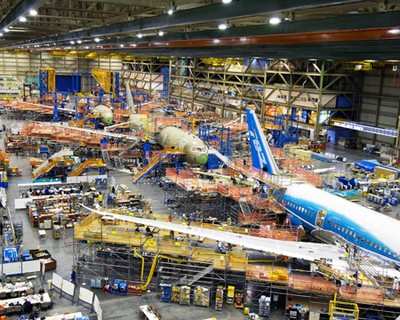
What will happen to all those orders, if/when airlines realize
they don't need all those planes? It's a chilling prospect... and
one nobody in Seattle or Toulouse wishes to contemplate. But the
cold hand of reality may be just around the corner...
3) Will Cessna's China Choice Alienate Its Customers?
Alas, many would argue it already has. The news that Cessna --
that most 'American Pie' of planemakers -- will
outsource production of its upcoming SkyCatcher LSA to communist
China was met with approving nods by the economics-minded, as the
best option for keeping production costs of the (relatively)
low-price plane in check. Many others, though, slapped their
foreheads at the announcement -- some, in outrage.
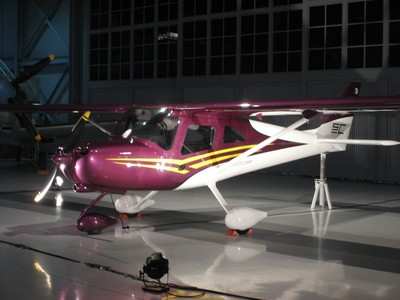
At best, Cessna's news was ill-timed... coming at the end of a
year filled with stories in the general media of substandard
Chinese-made products flooding the US market, and in some cases
even causing fatalities.
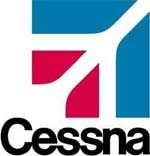 While it's still the
mainstay of many Americans' lifestyles, the "Made In China" label
carries an undeniable stigma right now, one Cessna will be
hard-pressed to combat. ANN has already heard from several
SkyCatcher depositors -- and a few Cessna dealers
-- disillusioned with the decision.
While it's still the
mainstay of many Americans' lifestyles, the "Made In China" label
carries an undeniable stigma right now, one Cessna will be
hard-pressed to combat. ANN has already heard from several
SkyCatcher depositors -- and a few Cessna dealers
-- disillusioned with the decision.
Many SkyCatcher deposit holders want to know when
Cessna actually decided to source the SkyCatcher in China --
namely, had the decision already been made when Cessna began
accepting orders at AirVenture 2007? We may have inadvertently
hit the mark when we postulated at the SkyCatcher's July 2007
release, "though the decision has likely already been made, Cessna
representatives told ANN that piece of information isn't quite
ready for public consumption."
And then there are the dealers -- the ones tasked with
buying a certain number of SkyCatchers each year, and then
selling the decision, and the plane, to a now
less-than-enthusiastic customer base. The flight training market --
the SkyCatcher's primary reason for existence -- may also be
impacted... as newcomer student pilots express concern over
flying a "Chinese" plane.
In the worst-case scenario, Cessna sets itself up for a fall in
a number of respects. While technically an economic ally with the
Western world, China remains openly militant in some regards -- not
the least of which are its ties to such hostile countries as North
Korea and Iran, and its test last year of a satellite-killer
missile. If China turns hostile, Cessna will lose its sole
manufacturing base for the plane... though, admittedly, loss of the
SkyCatcher would be the least of our problems at that point.
Of more immediate concern, is China's proclivity for
commandeering outside engineering enterprises. As an example, ask
anyone involved in McDonnell Douglas' foray into China in the
1970s, who now questions the originality of China's "homegrown"
ARJ-21 regional jet -- that shares more than a fraternal
resemblance to the MD-82s and MD-90s China once produced for that
now-defunct planemaker. And then there are the numerous reports of
human rights violations within that country's manufacturing
community, as well as the rampant corruption often seen as
once-oppressive regimes attempt to commercialize... which may well
put the occasional labor dispute in Wichita or Independence to
shame.

Don't get me wrong -- if there's a company that can
overcome these grumblings, it's Cessna. But there's a reason the
reputed Chinese axiom "may you live in interesting times" is
considered a curse.
4) Is The Gas-Fueled Piston Engine Dead?
Yeah, I know. This question has been asked and asked again, ad
nauseum, seemingly since the modern internal combustion engine
first came into being in the late 1800s. But now more than ever,
there's reason to believe the conventional piston powerplant under
the cowling of your Cessna, Mooney, Piper, et al may be a dinosaur
in five years. And you'll have the dinosaurs to thank...
specifically, the ones that died millions of years ago.
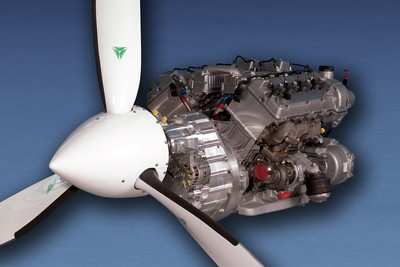
As global oil supplies appear to dwindle -- and the cost of
fuel continues to climb -- more and more manufacturers are looking
to engines that can operate on diesel fuel, kerosene, or Jet-A. For
the intent of this discussion, the three fuel-types are
interchangable... as each can be burned by the latest generation of
ostensibly "diesel" powerplants from companies like Thielert and
SMA, and are only variations on a theme.
While diesel offers a decided advantage in efficiency over 100LL
avgas, it's how the fuel is produced that is of most interest. It
costs less, and requires less energy and infrastructure, to deliver
aviation-grade diesel and kerosene to the customer, than it does
avgas. The fallout from this reality can already be seen in
developing countries and Europe, where it's easier to find Jet-A
than it is 100LL -- the opposite of most FBOs in the US.
Diamond led the way toward diesel-powered GA planes with its
DA42 Twin Star; this year, Cessna took the plunge as well, offering
the from-the-factory, Thielert Centurion 2.0-equipped Skyhawk 172
TD. Cessna will almost assuredly NOT be the last
manufacturer to do so.
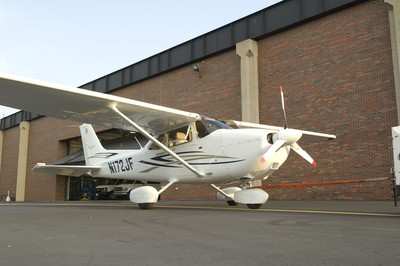
Yes, diesel-type fuels are also heavier, as are the engines...
negating some of the efficiency advantage through a loss in useful
load. There are also big pollution questions to be answered, as
more and more diesels -- which are inherently "dirtier" than
gasoline-fueled engines -- come online. Will those issues be enough
to stem the apparent rising tide of diesel-fueled planes? Time will
tell... but I wouldn't bet on it...
5) Is The 'VLJ Revolution' Faltering?
Some will automatically read that question as, "Is Eclipse
faltering?" Perhaps that's accurate, to a point, as the
Albuquerque-based planemaker more-or-less created the
very-light-jet category... and, had more than its share of problems
in 2007. But there are additional signs the prospect of swarms
of VLJs ever "darkening the skies" is a long time off... and may,
in fact, wind up being little more than an optimistic dream.
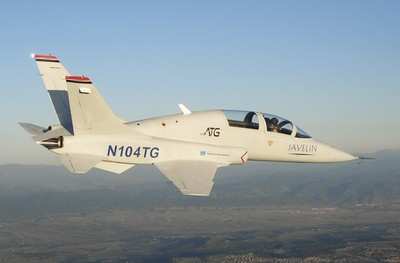
2007 saw the seemingly-abrupt decline of one aspiring
VLJ-maker: Denver-based Aviation Technologies Group,
which planned to offer the racy, fighter-inspired Javelin
two-seater. At this writing, ATG remains technically in business...
though company officials admit the end is nigh, unless a miracle
(i.e., a badly-needed cash infusion) occurs.
Across the field at Centennial Airport, Adam Aircraft continues
to push its A700 through certification testing at a measured pace
-- though it's worth noting Adam received TIA approval in December
-- and the company cautiously forecasts earning its
TC sometime in 2008.
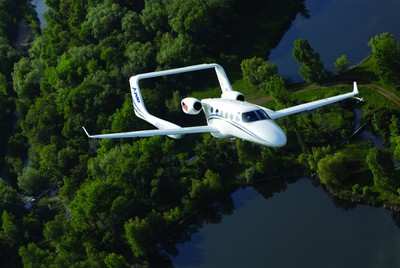
Things appear to be in pretty good shape, so far, for three
emerging VLJ programs. Embraer has met its development targets
to date for the Phenom 100 and 300, and two of the smaller Phenom
100s are already flying. Honda is slowly developing the
infrastructure to produce, market and support its upcoming
HondaJet, expected to enter service in 2010. Piper continues
to make headway in bringing the single-engine PiperJet to market.
The real test for all three programs, however, will come when
certification trials begin -- meaning the verdict is still out.
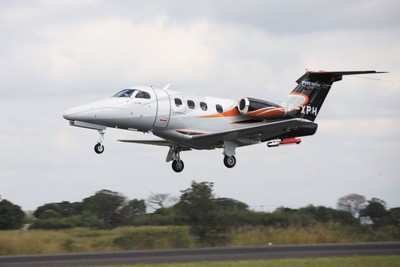
That leaves Cessna, and Eclipse -- the two most
successful companies to date in the VLJ segment, and the
only two so far to earn FAA type-and-production
certifications. (Cessna stresses the Mustang is an
"entry-level" jet, not a VLJ, but that's splitting hairs.)
Each company took profoundly different
approaches in building its planes. With years of
producing Citation jets under its belt, Cessna took a
deliberately cautious path with the Mustang... and, so
far, the planemaker looks particularly wise in doing so, as
Eclipse struggles to reach its lofty, volume-driven production
goals (and even loftier initial promises) and continues to
develop its reworked Avio NG system.
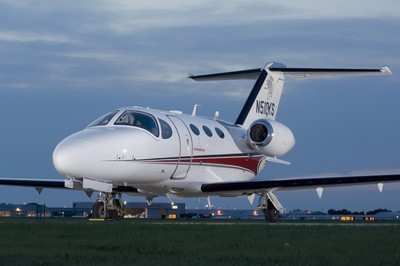
The good news for Eclipse is things appear to
be looking up as it enters 2008, with production rates
ramping up, FIKI testing underway and FAA certification
for the first phase of Avio NG in hand. Concerns about future
funding also appear to be answered, at least for now. (I've been to
Eclipse HQ recently, and I saw no down faces in the offices, or on
the production line.)
Being able to produce a large number of finished VLJs isn't the
only issue at play here, though; there's also the question of
whether there are enough customers to justify the high production
numbers.
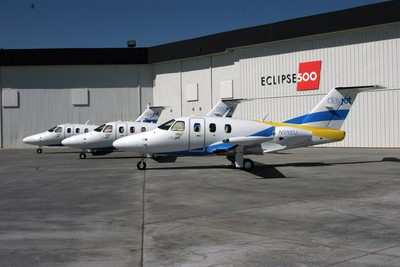
Eclipse replies, unequivocally, yes... and points to a
2,700-strong order book as proof (Cessna, by comparison, claims
around 400 orders for the Mustang). A significant chunk of the
Eclipse figure is tied to one customer, though: air taxi
provider DayJet, which formally launched its "per-seat, on
demand" operation last October. It's too soon to tell if DayJet
will ever need all those planes; early results appear mixed, with
DayJet CEO Ed Iacobucci telling ANN trends in DayJet's first
month of operation were "not below our lowest expectations,
nor are they above our highest.... we're pretty comfortably
snuggled in the middle." The carrier recently expanded its
operations to 28 new cities... roughly one destination for each
plane in DayJet's current fleet.
As the year 2007 came to a close, there were approximately
100 very-light-jets -- give or take a handful -- in customers'
hands, throughout the world. While certainly impressive, that's
hardly a "sky-darkening" number... more like a typical hour at
JFK International.
Time will tell whether the market will bear significant
increases to that number... or, if the new breed of
single-engine "personal jets" will rush in to fill at least some of
the promises initially made of their larger VLJ brethren.
While we many not see all the answers to those questions come in
2008, the year should give us all some idea as to which way
the winds are blowing. Stay tuned...
 Aero-News: Quote of the Day (10.27.25)
Aero-News: Quote of the Day (10.27.25) ANN's Daily Aero-Linx (10.27.25)
ANN's Daily Aero-Linx (10.27.25) NTSB Prelim: Lancair 320
NTSB Prelim: Lancair 320 Airborne Programming Continues Serving SportAv With 'Airborne-Affordable Flyers'
Airborne Programming Continues Serving SportAv With 'Airborne-Affordable Flyers' Airborne-Flight Training 10.23.25: PanAm Back?, Spirit Cuts, Affordable Expo
Airborne-Flight Training 10.23.25: PanAm Back?, Spirit Cuts, Affordable Expo















